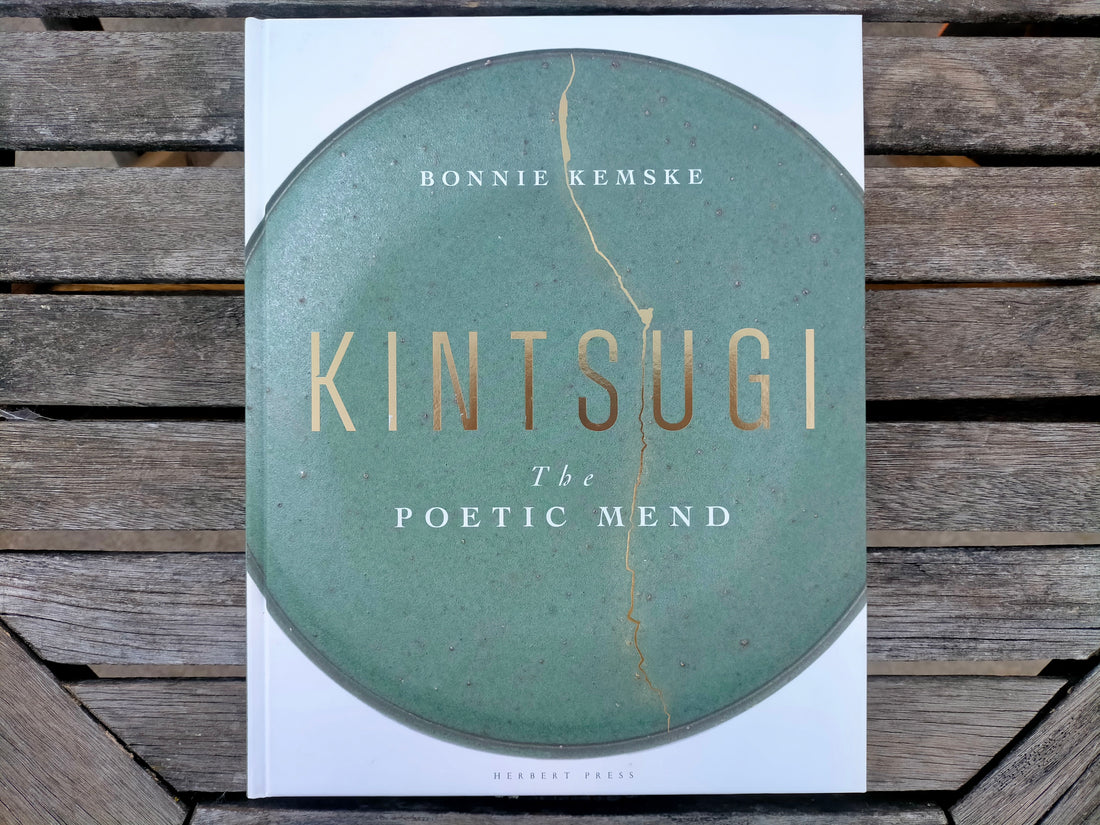The Japanese word kintsugi translates to ‘gold joinery’. It is the art of reassembling the pieces of a broken pot and gluing them back together with a mix of fine lacquer and gold. The result is a pot that can again be of practical use, as well as a decorative piece. The visible golden lines along the fixed pot give it a new and even more valuable life, highlighting the merit of a resilient object, the beauty behind each crack.
Published in 2021 by Herbert Press (UK), Kintsugi: The Poetic Mend is a book by North American ceramicist and writer Bonnie Kemske. Having studied ceramics and Japanese tea ceremonies in-depth, Kemske writes this book drawing a parallel between the act of re-joining the pieces of a broken pot and the one of healing in general, bringing up concepts like memory, resilience, reconstruction and beauty. For her, kintsugi is a metaphor of loss and recovery, of tragedy and the ability to overcome it.
In Kemske’s words, ‘the aim of this book is to give a context for both traditional and contemporary kintsugi through exposition, discussion and narrative, and to broaden our understanding of its importance as more than just a repair’.
What’s the book about?
This is not a step-by-step book on how to fix pots with the kintsugi technique (although there is a section in chapter four dedicated to the process of kintsugi repair, with photos and explanations for each step). In the six chapters that compose this beautifully edited publication, Kemske goes through many of her personal experiences while studying Japanese tea ceremonies and her travels to Japan doing research on kintsugi. She emphasizes the poetic meaning behind this technique, and shares a lot of her personal reflections on the relationship between kintsugi and the Japanese topography, its traditions and ceramic history. Throughout the entire book, one can clearly read Kemske’s appreciation towards Japanese culture and philosophy of life, and in consequence her genuine interest in exposing all aspects of kintsugi, not only its technical description.
What do we like about this book?
In the first place, we like the way it’s edited. The book has a delicate aesthetic, and presents a continuity throughout all pages by a subtle yet thoughtful golden line on top of each page which mimics the line of a kintsugi repair.
The images play an important role as we’re able to see examples of all descriptions given in the text. And considering there are a lot of technical concepts and names, having images showing each of these becomes crucial.
The appreciation of a kintsugi repair has a lot to do with its physicality, the ability to touch and rotate the repaired pot, and observe each detail. However, the photos in this book give plenty of close-ups, interior views, and comparative images that help us appreciate the technique as if we had the object right in front of us.
We also enjoyed reading Kemske’s descriptions, at the end of each chapter, of her encounters with other artists and their work, like Raku Kichizaemon XV’s Nekowaride, or her visits to John Domenico in Arizona, and Suzuki Goro in Japan.
The book presents an extensive reflection on the meaning and symbolism of kintsugi technique, in a way that’s very pleasant to read.
Where can you find this book?
Kintsugi: The Poetic Mend can be found in different book shops around Australia. Readings has it in stock, as well as Brunswick Bound . We’re sure it could also be found around other shops throughout Melbourne. If you’re somewhere else in Australia, you can buy it online from Booktopia or Book Depositoy.
At Daisy Cooper Ceramics we regularly run workshops on ‘modern’ kintsugi. Check out our website for upcoming events and sign up for your next one! Daisy will guide you through repairing your beloved but broken ceramic piece using a modern version of kintsugi. You’ll walk out with a new pot in your hands, loose pieces of a broken pot transformed into a beautiful object which celebrates the act of repairing and reusing.

